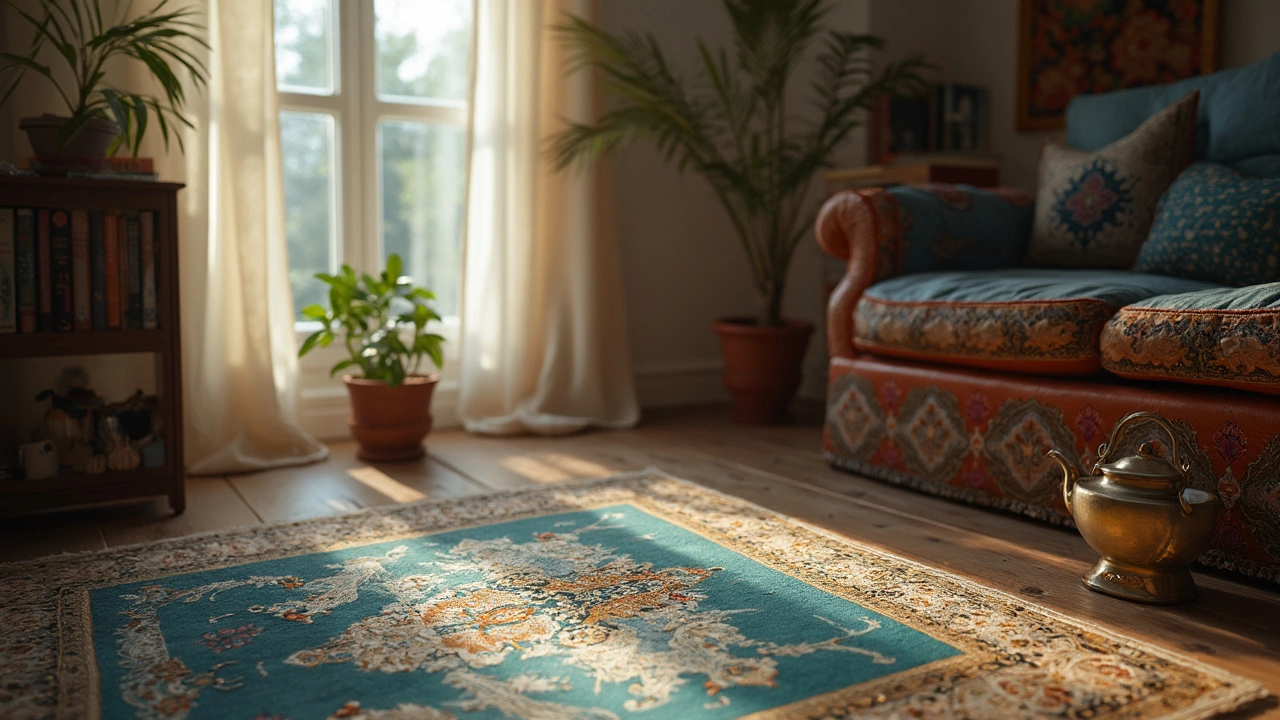Islamic Rug: Traditional Beauty for a Green Home
If you’ve ever walked into a room with an Islamic rug, you’ve felt the instant lift in atmosphere. The bold geometric patterns or delicate floral motifs aren’t just decoration – they carry history, culture, and often a prayerful intention. Because you care about the planet, you’ll want a rug that’s as sustainable as it is stylish. Below you’ll find the basics on design, material, buying, and caring for an Islamic rug that fits a modern eco‑friendly home.
Understanding the designs and meanings
Islamic rugs come in three main styles: Persian‑inspired, Turkish kilims, and North African Berber designs. Persian pieces usually feature a central medallion surrounded by intricate vines, while Turkish kilims use flat‑weave techniques that produce bold, blocky patterns. Berber rugs often have simple, repeating diamond shapes. Each pattern tells a story – sometimes it marks a region, a tribe, or a spiritual concept. Knowing a little about the symbols helps you pick a rug that resonates with you, whether you want a piece for daily prayer or a decorative splash.
How to pick a sustainable Islamic rug
Start with the fibre. Wool is the most common, renewable, and naturally fire‑resistant. Look for rugs made from locally sourced wool or even organic cotton for a lighter option. If you love a silk feel, choose rugs dyed with low‑impact, plant‑based colours instead of harsh chemicals. Check the back – a hand‑tied knot count indicates quality, and a tighter knot means the rug lasts longer, reducing waste. Finally, buy from sellers who give clear information about sourcing and who support fair‑trade practices. That way your beautiful rug also supports artisans and the environment.
Size matters too. Measure the space where you’ll place the rug and add a few inches on each side; a rug that’s too small looks lost, while one that’s too big can overwhelm the room. For a prayer rug, a standard size of about 2.5 ft × 4 ft works well for most users. If you want a floor‑covering rug, think about traffic flow – a durable, low‑pile rug holds up better in busy areas.
When it comes to placement, keep your rug away from direct sunlight to prevent fading. Use a rug pad underneath; it adds cushion, prevents slipping, and extends the rug’s life by reducing friction on the floor. If the rug is in a high‑moisture zone like a bathroom, avoid wool and opt for a synthetic blend that won’t absorb water.
Cleaning is simple if you do it right. Vacuum gently on the low‑setting side, and spot‑clean spills with a mix of water and mild dish soap. Never soak the rug or use harsh bleach – it can damage the fibres and the dye. For a deeper clean, rotate the rug halfway through the year to even out wear and keep the pattern looking fresh.
Finally, think about where you’ll buy your rug. Eco‑friendly online stores, local artisan markets, and specialty boutiques often carry certified sustainable pieces. Look for product pages that list material origins, dye processes, and the maker’s story. If you can, ask to see a sample of the backing and feel the texture before committing.
By understanding the meanings, choosing the right materials, and caring for your rug properly, you’ll enjoy a piece of art that honors tradition and respects the planet. Whether it’s a prayer rug for quiet moments or a statement rug for your living room, the right Islamic rug can transform a space while keeping sustainability front and centre.
-

What Do Muslims Call the Rug? Your Guide to Prayer Rugs
Ever wondered what Muslims call that special rug they use for prayer? This article will tell you its proper name, explain why it matters, and clear up some common myths. You'll learn what makes it different from regular rugs and how it's used in daily life. Get handy tips for buying and caring for one if you're curious or need one yourself. Plus, discover a few facts you probably didn’t expect.
